Disclaimer: This article borrows perspectives from numerous builders and founders of lattice, Eth.global, Lootverse, and more - sources of inspiration are inserted as links in the body of the text. Thank you to the many pioneers who are paving the way for Auotnomous World.
Another unheard-of pedantic word?
By now, many of you reading this are likely quite familiar with the concept of a DAO (Decentralized Autonomous Organization). However, ever since the concept of DAO was first proposed by the Ethereum Foundation in 2016, enthusiasts have been both excited and perplexed. While some may feel they have a grasp on the concept of DAO and find it even more challenging when comparing it to real-life examples, the consensus on how to define it remains elusive, causing anticipation to spread before reaching a clear agreement. It took several years of experimentation and reevaluation before DAO finally solidified into a universally accepted concept with defined core values and requirements.
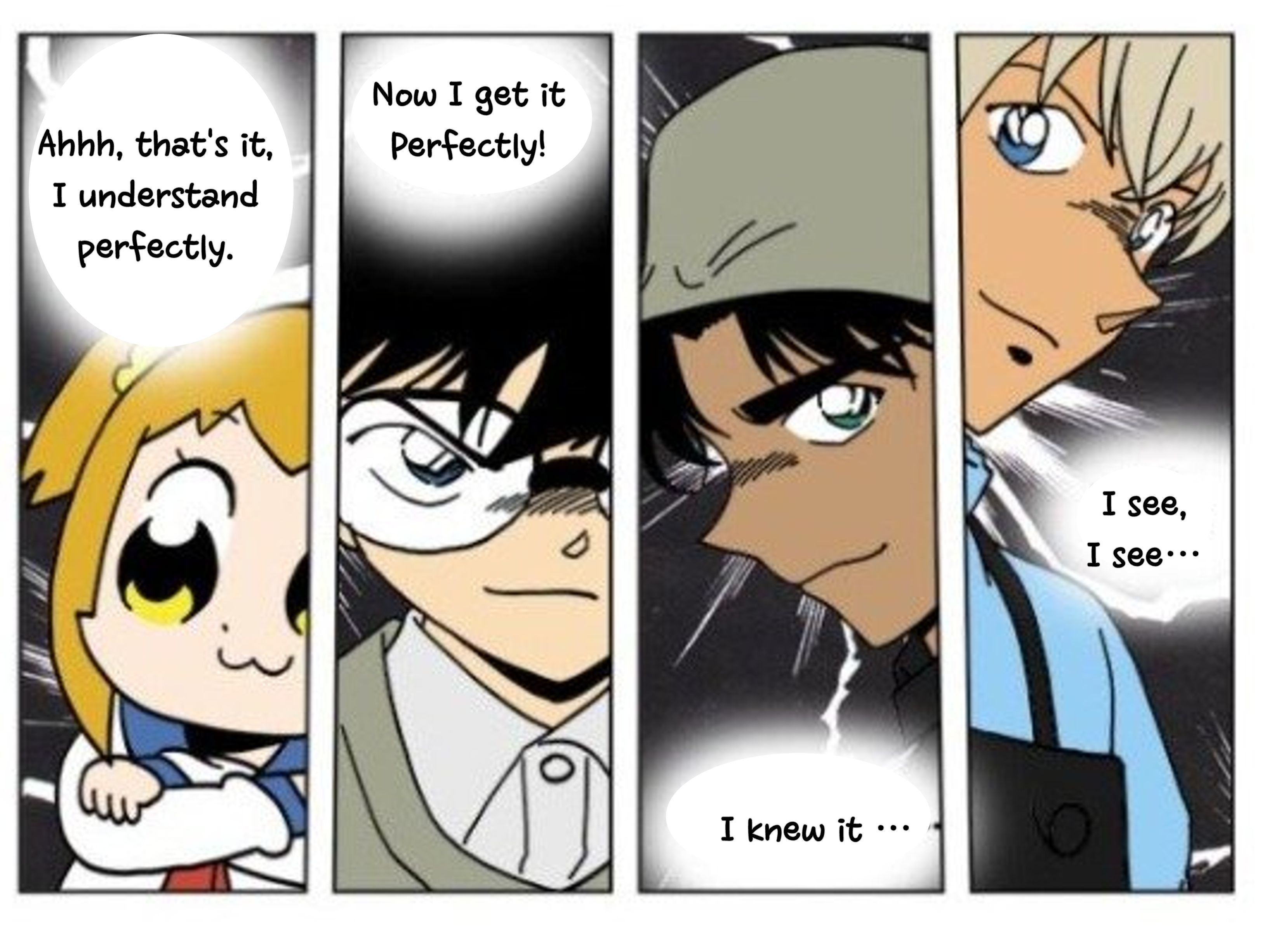
Are you familiar with the concept of the Autonomous World? It is likely that Autonomous World is a relatively unfamiliar term to many or perhaps a concept that they briefly came across. However, since you're reading this, I recommend keeping it in the back of your mind and showing a bit more interest when you come across related content. Just like DAO did, this AW, which is emerging as a new experimental frontier in the realm of crypto, has the potential to become a significant axis and a thriving industry someday. So, it's worth taking a closer look.
The Emergence of the Autonomous World
Within the current crypto scene, there has been a growing discussion about the Autonomous World (AW), which, in terms of technical aspects, is not significantly different from the concept of a "Fully on-chain game." However, to understand the anticipation generated by this "Autonomous World" experiment, it is more important to grasp the context and underlying sentiment of the term rather than defining it within the scope of technical categories.
The team behind Lattice, a group known for nurturing Ethereum-based technology and infrastructure projects under the 0xPARC Foundation, has coined the term "Autonomous World" (hereafter AW). One of the members, Ludens, introduced the concept of AW to the world through their article titled "Autonomous Worlds (Part 1)" in August 2022 and the keynote at D.E.F.CON 2022. Lattice had gained recognition for their development work on complete on-chain games like Dark Forest and the framework MUD, which is designed for building large-scale applications.
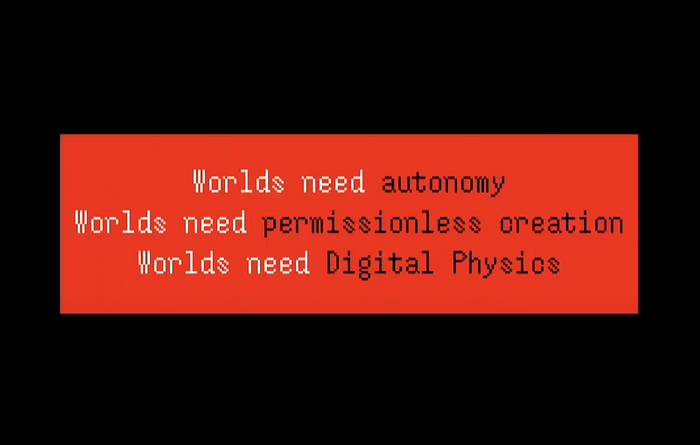
They emphasize that in order to progress beyond tokens, NFTs, and liquidity to the creation of a digital world that surpasses Ethereum, they need to ensure autonomy, permissionless creation, and adherence to digital physics. With these conditions in place, they have coined the term "Autonomous World" to represent a fully self-sustaining open-source digital realm.
The concept of AW proposed by them resonated deeply and struck a chord with those who had felt confined within the narrow category of "blockchain games," despite their desire to create an autonomous world and ecosystem based on on-chain principles. This response is evident in the notable strides already being made in the realms of Loot and AW, as showcased in the blog post titled "Realms - The Autonomous World" by Bibliotheca DAO.
“Bibliotheca DAO has been building an eternal and ever-expanding onchain game world called the Realms. Examining the notion of Realms as an ‘Autonomous World’, we'll also reflect on Loot as the catalyst - the 'big bang' event that led us here.”
“Realms was born out of the Loot phenomenon, carrying a distinct vision for a continually evolving, modular game that could flawlessly incorporate all Loot assets. The concept of "Autonomous Worlds" hadn't been coined at that time; instead, we initially referred to the idea for ‘Realms: Eternum’ (aka Eternum) as a Massively Multiplayer Online Onchain Composable Game (MMOCCG, yes LOL). Later on, we dubbed it the ‘Eternal Game’. However, none of these terms resonated as powerfully or evoked the same emotional response as "Autonomous Worlds" to describe the broader hyperstructure in which the game Eternum sits.”
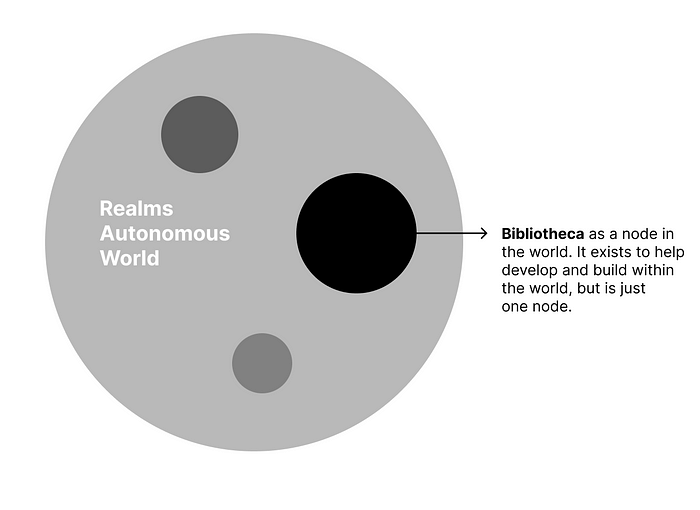
The builder community, looking to define a digital world that can exist and be contributed to beyond blockchain games and fully on-chain games (FOGs), has been crafting words like MMOCCG, Eternal Game, and Composable Game. In this landscape, Lattice has succeeded in gathering public resonance and expectations under the narrative of the Autonomous World, thanks to its clear logic and persuasive Diegesis setting.
Following that, the MUD engine based on Ethereum and the DOJO engine based on StarkNet rapidly began to grow, carrying the expectations of the AW narrative on their shoulders. Various AW projects and their derivative plugins started to emerge. In projects with active communities like Dark Forest, true autonomous world governance attempts have emerged, where members contribute rules and components on top of fundamental physical laws, and governance leads the changes in the world. Lattice, in collaboration with OP Labs for several months, even unveiled OP Craft in October 2022, a fully functioning voxel-based 3D game on-chain, akin to Minecraft. It served as a breakthrough, shattering biases regarding the scalability limits of blockchain games and generating high expectations for the innovation that technological advancements could bring. Builders organizing AW meetups and hackathons have appeared worldwide, and venture capitalists such as 1KX have actively begun fostering the AW ecosystem.
In May 2023, the Eth.Global Foundation, in collaboration with Optimism, 0xPARC, Lattice, and NFT.Storage, organized a global virtual hackathon called "Autonomous Worlds." The challenge of the hackathon was to utilize MUD, an on-chain game development engine based on Ethereum, to create and present new tools or elements for autonomous world experiments. Through this hackathon, Lattice and the Eth.Global Foundation clearly demonstrated that the concept of the autonomous world is seeking a new definition within the blockchain space and represents a flow of opportunities with numerous possibilities.
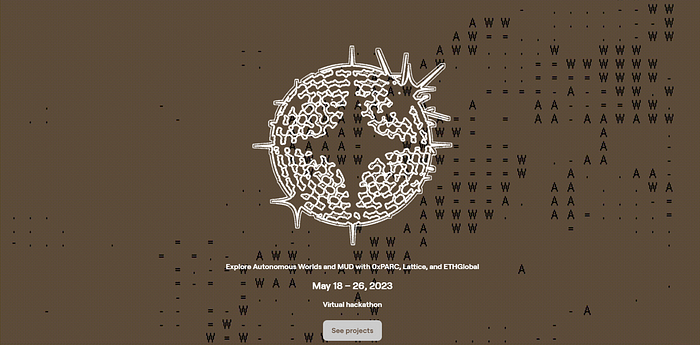
What is the Autonomous World?
That was a lengthy background explanation. Now, let's delve into why Ludens' proposed term "Autonomous World" aligns perfectly with the current narrative. This piece, similar to Ludens' use of the term "Diegesis," seeks to explore the underlying hidden narrative, which may not be immediately evident in the visible or technical categorization of the term.
World
First, let's clarify what we mean by "World." In the context of the term "Autonomous World," what does "World" represent? A world can be seen as a container that encompasses independent entities and the rules governing their behaviors. It doesn't necessarily refer only to physically experiential worlds, like the one we inhabit. It can include worlds with no physical presence, such as the "magical world of Harry Potter," "religion," or the "dollar-based monetary system." These worlds all contain distinct objects and rules within them and have discernible boundaries.
Dependent World
In most cases, the worlds we perceive can be classified as "dependent worlds" and are often dependent on entities outside their boundaries. These worlds rely on external support and compensation, making their existence vulnerable if that support is withdrawn. As a result, the external entities that ensure the world's persistence hold the greatest power and authority in controlling that world.
Let's take the world of "Harry Potter" as an example. Within the Harry Potter world, various subjects such as Muggles, wizards, and magical creatures coexist, governed by their own rules and interactions. While the Harry Potter world enjoys millions of fans, the creation, evolution, and expansion of this world lie solely within the power of the original author, J.K. Rowling. In other words, nothing can be added or integrated into the world without the author's consent; it has a structure that rejects any unauthorized content. Furthermore, if fans ceaselessly consume the content of this world but fail to mention or engage with it, resulting in a disappearance of demand for books, films, and other media that bring the world to life, the world itself cannot be sustained. It is a world that ceases to exist without citizens to keep it alive.
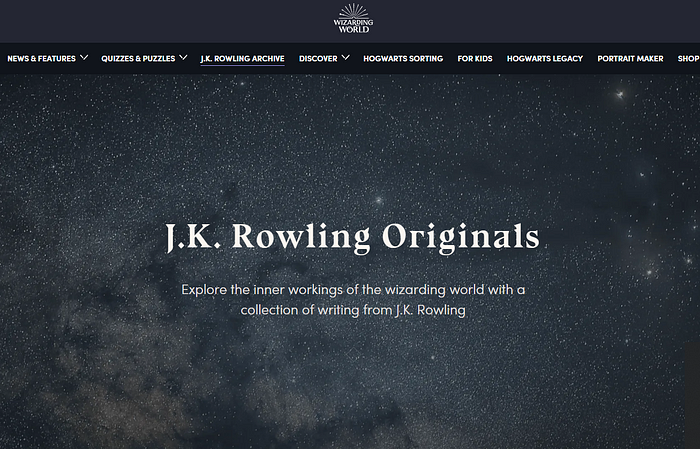
What about MMORPG games like World of Warcraft that are familiar to us? It is true that these real-time games provide players who visit their virtual worlds with ample opportunities for interaction. However, the rules for such interactions, the economic systems within the worlds, and the logic and story that shape the objects are still solely within the privilege of the creators (developers).
These MMORPG games can be seen as a type of sandbox where limited regulations and pre-designed resources come together. As a result, those who visit these worlds can only react fragmentarily to the pre-established environment and unchangeable values. The rules and storyline of the world are scripted and solely accessible to the creators, while any attempt by players (residents) to add new rules or storylines to the world is immediately considered "hacking" or "illegal modding" and results in penalties, such as expulsion.
Such "dependent worlds" remain confined like artifacts trapped in a pumpkin, unchanging and maintaining their uniqueness. These worlds do not fully embrace the people who enter them (spectators, readers, gamers) as residents integrated into the world but only greet them as tourists, bidding them farewell upon their departure. In these worlds, readers may temporarily immerse themselves emotionally, consume content, and contribute ideas to fan fiction, but they do not have the opportunity to truly integrate as part of the world.

Autonomous World
The Autonomous World, on the other hand, is a world that doesn't rely on external dependencies for its existence and evolution. It persists even without external support, without anyone's control, and even in the absence of citizens visiting or inhabiting the world. The Autonomous World simply continues to operate independently, following its predefined rules.
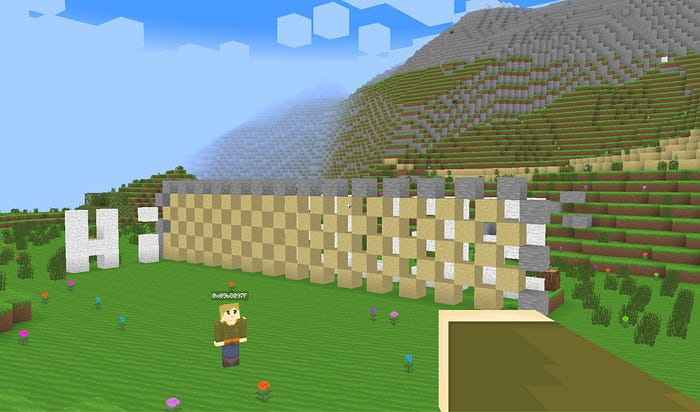
The Autonomous World can continue to exist even if its “original creators” disappear, and its citizens have the ability to create and contribute new elements as long as they adhere to minimal "standard rules." While the Autonomous World has initial creators (such as writers, planners, or developers) who establish standard rules, anyone entering the world is recognized as a citizen with equal rights. The Autonomous World signifies a world where there are "immutable standards" and "formalized entry rules," but it doesn't require privileged classes to maintain them.
By now, you may feel a sense of familiarity with the concept of the Autonomous World. Yes, the necessary conditions for the Autonomous World are closely intertwined with the technological strengths provided by blockchain. The fact that the world operates according to the rules encoded in the code, without the need for external intervention or maintenance, and cannot be shut down even by malicious attempts, showcases the advantages of Ethereum's smart contracts and the EVM (Ethereum Virtual Machine). In other words, the concept of the Autonomous World being discussed goes beyond simply utilizing blockchain; it is a concept inseparable from blockchain itself, an exploration topic made possible by the blockchain.
In essence, the Autonomous World is an on-chain world implemented on top of the blockchain, open-source and accessible for participation and modification by anyone. Anyone can become a part of the world, leaving their own history and traces within it. The world continues to evolve, taking on diverse forms through the rules and improvement proposals of new citizens, even if the developers have departed. As long as the Ethereum network remains operational, the world persists and does not disappear.
Let's recap
Let's go back to the beginning and take a look at the content introduced on the Autonomous World Hackathon page of Eth.Global's official website.
New forms of computation enable fundamentally new kinds of virtual Worlds. Autonomous Worlds are not just Worlds that happen to exist onchain, but Worlds that could not exist otherwise. Personal computing allowed early game developers to sculpt single-player Worlds in which isolated individuals could immerse themselves in the rule-based structure of a text adventure or a pixel bouncing around the screen. Networked computing allowed for these private interactive experiences to be expanded into multiplayer Worlds: server-based muti-user dungeons and massively multiplayer online games whose dynamic unfolding was no longer contingent on the participation of a single player.The arrival of onchain computing brings with it the possibility of Autonomous Worlds: multi-author, maximally persistent Worlds that can not only be experienced by multiple inhabitants, but also expanded by them. These Worlds are no longer read-only vessels for private immersion or collective experience, but a collaborative commons whose open-ended evolution is steered by digital consensus.The unique affordances of Autonomous Worlds can be glimpsed in early experiments with onchain games, but their full potential remains to be realized. In this hackathon, we invite developers and game designers to build games and tooling that test what they see as the fullest possible expression of an Autonomous World.
Personally, I believe the phrase "a collaborative commons whose open-ended evolution is steered by digital consensus, rather than a read-only vessels for private immersion or collective experience" best describes the concept of Autonomous World.
The narrative of Autonomous World is still in its early stages. It has been less than a year since the release of MUD and MUD-based games at Eth.Global events, and the implementation of fully on-chain games is still not seamless. However, impressive projects like OP Craft and Dark Forest have already demonstrated remarkable attempts, and the active involvement of citizens (game users and modders) has shown the potential for even more remarkable transformations. Thus, we can expect that Autonomous World will continue to evolve into a larger narrative and category.
This article has not covered all the global news and new projects in the AW space, which are rapidly expanding. In the future, we will strive to share updates on the MUD and DOJO ecosystems, movements of VCs and DAOs, stories of Loot and Lootverse, as well as information on new global conferences and hackathons, to contribute to the definition and exploration of AW.